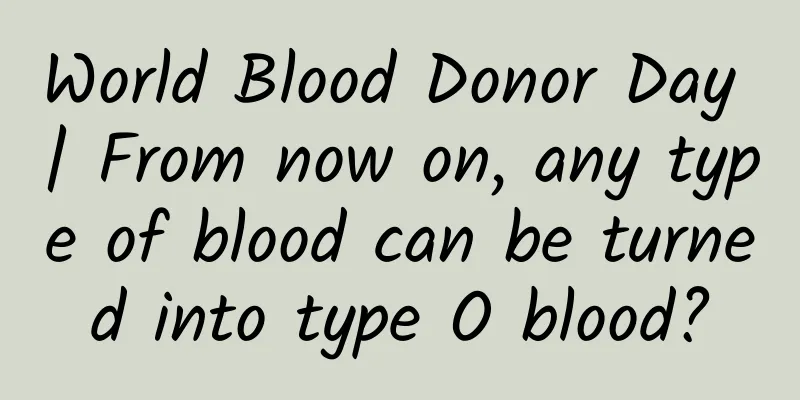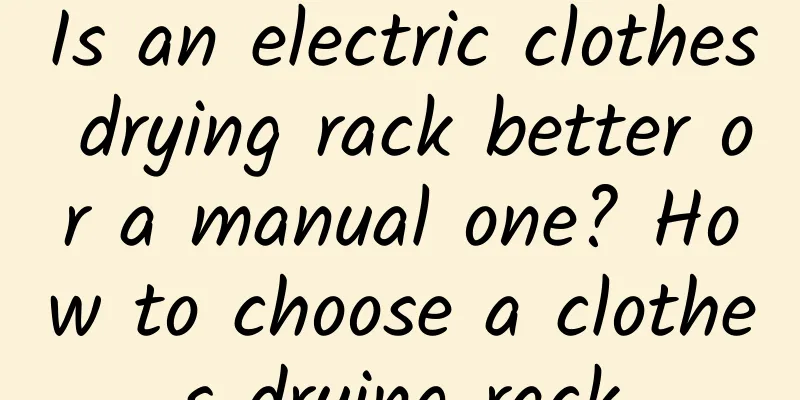World Blood Donor Day | From now on, any type of blood can be turned into type O blood?

|
Produced by: Science Popularization China Author: Denovo Team Producer: China Science Expo June 14th is World Blood Donor Day. From the streets of cities to remote villages, from young students to elderly people, countless blood donors interpret the great love of humanity with their practical actions. Their good deeds not only save countless dying lives, but also build a solid line of defense for social health. Currently, humans are unable to produce blood, and much-needed blood still relies on donations from others. However, during a blood transfusion, a mismatch in blood type can be fatal. Sometimes, even if there is enough blood supply in the blood bank, it can still cause a shortage due to a mismatch in blood type. Recently, scientists from the Technical University of Denmark successfully converted type A and type B blood into type O blood using a bacterial enzyme in the intestines. This breakthrough is expected to alleviate the problem of blood shortage. Danish scientists convert A/B blood to O blood (Image source: Reference 1) Blood type - the identification system of red blood cells Blood type is the "identity recognition system" of each red blood cell, because they have specific glycolipid and glycoprotein molecules on their surface, which constitute antigens. Different combinations of antigens determine different blood types, such as type A, type B, type AB and type O. These antigens are like the "identity cards" of red blood cells and play a vital role in the blood transfusion process. Schematic diagram of the red blood cell identification system (Image source: AI synthesis) When we receive a blood transfusion, if the blood type does not match our own, the immune system will recognize foreign antigens and produce antibodies to attack, resulting in a serious immune response. Therefore, matching blood types can ensure that red blood cells can transfer oxygen smoothly without being rejected by the immune system. Understanding the relationship between blood types and antigens helps to safely perform blood transfusions and organ transplants. Is O blood type really universal? Type O blood is often called the "universal blood type" because it does not have type A or type B antigens on its surface and is not likely to cause an immune response in recipients of other blood types. It is compatible with most other blood types, which means that type O blood is particularly suitable for transfusion in emergencies. However, this compatibility is mainly for transfusion of red blood cells, not plasma. O-type red blood cells can be widely used, but O-type plasma is not universal. O-type plasma contains anti-A and anti-B antibodies, which will attack red blood cells containing type A or type B antigens. Therefore, when transfusing plasma, the blood type of the recipient needs to be matched to avoid immune reactions and complications. Red blood cells in the blood (Image source: AI synthesis) In addition to the ABO blood group system, there is also the Rh blood group system. The Rh factor was first discovered by Karl Landsteiner and Alexander Wiener in the red blood cells of rhesus monkeys in 1940, hence the name Rh factor. Later, this antigen was also found in human blood. It is classified based on the presence or absence of a specific protein (i.e., Rh factor) on the red blood cell membrane. The Rh factor is also called the RhD antigen. If this antigen is present on the red blood cells, it is called Rh positive (Rh+); if this antigen is not present, it is called Rh negative (Rh-). Type O Rh negative blood is considered the most "universal" because it has neither type A or B antigens nor Rh antigens. This blood type is particularly important in emergency situations because it hardly causes any immune response. However, O-type Rh-negative blood is relatively scarce worldwide, so in non-emergency situations, blood type-matched transfusions are still given priority to ensure the rational use of resources. Performing surgery on red blood cells to change blood type The ABO blood type of red blood cells depends on the structure of oligosaccharide chains on their surface. Oligosaccharide chains are short-chain sugar molecules formed by connecting multiple monosaccharide molecules through glycosidic bonds. They are usually composed of 2 to 10 monosaccharides, which is between simple monosaccharides and complex polysaccharides. O-type red blood cells have neither A antigen nor B antigen, but they actually have H antigen. H antigen is composed of a fucose added to the oligosaccharide chain precursor. Except for the extremely rare Bombay type, almost everyone has H antigen on their red blood cells. The A gene of type A individuals encodes N-acetylgalactosamine transferase, an enzyme that adds an N-acetylgalactosamine to the end of the H antigen, forming the A antigen (Science in the News). The B gene of type B individuals encodes galactosyltransferase, an enzyme that adds a galactose to the end of the H antigen, forming the B antigen. At this point, everyone may feel a little confused. Please look at the picture below. To put it simply, the red blood cells of type A blood have only one more N-acetylglucose molecule than the red blood cells of type O blood; and the red blood cells of type B blood have only one more galactose molecule than the red blood cells of type O blood. Diagram of A/B/O type red blood cells (Image source: drawn by the author) So, is there a tool similar to a scalpel that can remove the extra N-acetylglucose and galactose on type A/B red blood cells? Yes, you can use some biological enzymes to perform surgery on red blood cells! Schematic diagram of performing surgery on red blood cells using biological enzymes (Image source: drawn by the author) Blood type conversion is not a new technology As early as the 1950s and 1960s, studies have found that enzymes from certain bacteria can remove A and B antigens from the surface of red blood cells. These discoveries have opened up the research direction of scientists trying to change blood types through enzymes. In the early 1980s, scientists at the New York Blood Center used enzymes from coffee beans to convert B-type red blood cells to O-type and conducted a small-scale volunteer trial. The results showed that these converted O-type red blood cells had normal activity and survival in the body. In the 1990s, the research was further expanded and the processed B-type red blood cells were transfused into healthy volunteers with types O and A, with no adverse reactions in the vast majority of cases. In 2000, scientists at Harvard Medical School transfused modified O-type red blood cells into 21 patients with type A or type O blood. The test results showed that compared with the control group, the hemoglobin level of the test group was normal, and the survival period of red blood cells was normal. Only two weeks after the transfusion, the anti-B titer of 5 patients increased, that is, the concentration of antibodies against type B red blood cell antigens in the blood increased, but no other adverse reactions were observed. You may have noticed that in early studies, scientists mainly focused on transforming type B red blood cells rather than type A red blood cells. The main reason is that the expression of A antigen on red blood cells is more complicated and not as simple as the diagram above. The A antigen is composed of a series of sugar molecules that bind to the surface of red blood cells through N-acetylgalactosamine (GalNAc). There are not only A antigens on type A red blood cells, but also a variety of different A subtypes. The structures of these subtypes are complex and diverse, making it difficult for a single enzyme to efficiently remove all types of A antigens. The expression of A antigen on red blood cells is more complex (diagram) (Image source: AI synthesis) Clinical application prospects of blood type conversion In 2022, scientists at the University of Cambridge successfully converted the blood type of kidneys from three deceased donors to type O. The study used a device called a "regulated temperature perfusion machine" to perfuse blood containing specific enzymes into the donated kidneys to remove blood type markers from the lining of the kidney's blood vessels, which allowed the kidneys to become universally accepted type O. This groundbreaking research result is expected to reduce the waiting time for patients waiting for kidney transplants and increase the success rate of transplants. In a paper published in Nature Microbiology, researchers from the Technical University of Denmark and Lund University in Sweden reported an important discovery: they found a group of enzymes in Akkermansia muciniphila (AKK), a bacteria that colonizes the intestine (the process by which microorganisms settle in specific parts of the host and begin to multiply), that can convert known and previously unknown antigens in human red blood cells, converting blood to type O. The research team conducted a biochemical screening of enzymes produced by Akkermansia muciniphila that can break down polysaccharides in mucus. They found a group of structurally unique enzyme combinations that can effectively convert type A and type B red blood cells to type O. These enzymes are also effective for recently discovered extended type A and type B antigens, and reduced mismatch reactions in tests, especially for converted type B red blood cells. Even for the A antigen and its extended antigen on the surface of red blood cells with more complex structures, AKK's removal efficiency is quite high. They found that only 0.5μM AmGH36A (an AKK) can completely convert A antigens from three donors within 30 minutes. This discovery is expected to become a potential clinical tool to increase the supply of universally compatible blood and provide a new way to resolve the contradiction between blood supply and demand. Schematic diagram of A, B, and O blood group antigens on red blood cells and mucin (Image source: Reference 1) Conclusion The progress of scientific research is exciting. Perhaps in the future, through blood type conversion technology, we can effectively solve the "biased" problem in blood supply and achieve a more balanced distribution of blood resources. However, bioengineering technologies such as blood type conversion of red blood cells and stem cell-induced differentiation of red blood cells still face huge challenges in terms of preparation efficiency, product stability, long-term safety, and economic costs. These technologies still have a long way to go to achieve the goal of standardized and large-scale clinical supply. Although the clinical application prospects of artificially modified blood are broad, they are also full of uncertainties and technical difficulties. At this stage, blood supply still mainly depends on voluntary blood donation and regular blood donation. Regular blood donation can not only meet the urgent demand for blood, but also improve the utilization efficiency of blood resources through scientific management and reasonable allocation. World Blood Donor Day is here, let’s go donate blood together! References: 1. Jensen, Mathias, et al. "Akkermansia muciniphila exoglycosidases target extended blood group antigens to generate ABO-universal blood." Nature Microbiology (2024): 1-13. 2. Rahfeld, Peter, et al. "An enzymatic pathway in the human gut microbiome that converts A to universal O type blood." Nature Microbiology 4.9 (2019): 1475-1485. 3. Kwan, David H., et al. "Toward efficient enzymes for the generation of universal blood through structure-guided directed evolution." Journal of the American Chemical Society 137.17 (2015): 5695-5705. 4. Hakomori, Senitiroh, and Geneva D. Strycharz. "Cellular blood-group substances. I. Isolation and chemical composition of blood-group ABH and Leb isoantigens of sphingoglycolipid nature." Biochemistry 7.4 (1968): 1279-1286. 5. Goldstein, Jack, et al. "Group B erythrocytes enzymatically converted to group O survive normally in A, B, and O individuals." Science 215.4529 (1982): 168-170. 6. Kruskall, Margot S., et al. "Transfusion to blood group A and O patients of group B RBCs that have been enzymatically converted to group O." Transfusion 40.11 (2000): 1290-1298. 7. MacMillan, Serena, et al. "Enzymatic conversion of human blood group A kidneys to universal blood group O." Nature Communications 15.1 (2024): 2795. |
Recommend
Influenza is prevalent, don't do this at home! It's ineffective and harmful to your health
Daily household cleaning is an important part of ...
What are the differences between Dandong strawberries and ordinary strawberries? How to choose authentic Dandong strawberries
Strawberries are bright in color and very nutriti...
Where to measure waist circumference for girls
I believe that before buying clothes, everyone wi...
When is the best time for women to have an IUD inserted?
Most women choose to have an IUD inserted for con...
Can I eat donkey-hide gelatin if I have breast hyperplasia?
Women are very prone to some gynecological diseas...
What to do about dry eyes during menopause?
Menopause is a stage that women cannot avoid, bec...
What causes vaginal itching and odor?
Many female friends have experienced vaginal itch...
What if I have brown discharge a week before my period?
Menstruation is the physiological phenomenon that...
Regular uterine contractions disappear in the morning after one night
Everyone knows that having a baby is a very natur...
What are the basics of Xinjiang barbecue? Can an expert teach you how to make Xinjiang barbecue?
Barbecue has a long history in my country. Some sa...
Is it okay to store bananas in the refrigerator? How to ripen bananas quickly
Bananas, also known as golden bananas and bow ban...
How to choose pickled pepper chicken feet? Will eating pickled pepper chicken feet make you fat?
Pickled pepper chicken feet is one of the favorit...
What is the reason for the green leucorrhea with odor?
Everyone knows that leucorrhea is the normal secr...
Abnormal leucorrhea, find out the cause and then treat it
Leucorrhea is an important criterion for women to...
What to do if your menstrual cycle is short and long
In fact, many women in life will have irregular m...









